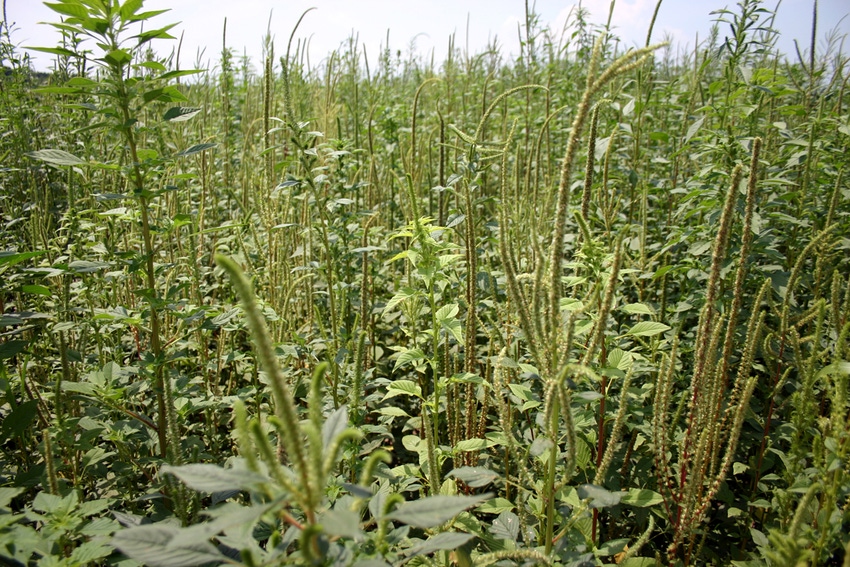May 22, 2012

Farmers, consultants, dealers, and weed scientists enjoyed several years when killing weeds was fairly simple. And, that is what we were doing — killing weeds. The crop was planted, weeds emerged, weeds were sprayed with glyphosate, weeds died. When the next flush of weeds came up, the process was repeated.
More often than not, this worked well. There were always problems such as glyphosate drift to rice, which was more severe some years than others. But in areas where Roundup Ready corn, cotton, and/or soybeans were planted in large blocks, weed control was accomplished with unprecedented speed and efficiency.
When glyphosate was effective on most of the weeds in the Mid-South, we were in a period of “weed control.. We all operated with the plan of “see weed, kill weed.” However, over the last few years since glyphosate-resistant weeds have become so prevalent, we have entered a period of “weed management.”
Before glyphosate resistance, we did not have to worry about herbicide carryover from the previous year because, most of the time, only glyphosate or a tank-mix of glyphosate and another postemergence herbicide had been applied the previous year. We did not have to worry about tank contamination because glyphosate was likely the last herbicide that went through the sprayer before a glyphosate application. We were not concerned with herbicide timing or the logistics of covering thousands of acres in a timely manner because glyphosate was effective on large weeds. Drift was not a concern unless a rice field or the neighbor’s garden was in the immediate vicinity.
Habits are hard to break, and unfortunately, the calls I have received this year are similar to those from last year. Fomesafen (Flexstar, Flexstar GT, Prefix, Reflex) carryover on corn was as bad this year as it was last year in Mississippi. Paraquat (Gramoxone SL, Parazone, Quick Quat) or paraquat plus fomesafen drift to corn and rice was increasingly common. I have looked at too many fields over the last two years where something was added to the sprayer that should not have been there. And there is still the occasional, “I thought it would kill them,” when glyphosate fails to control Palmer amaranth.
In order to gain ground in the war on glyphosate-resistant weeds, we all must accept the fact that weed control is now weed management. Successful weed management in areas with glyphosate resistance requires that those with decision-making responsibility are aware of what is going on in every field all the time.
Know what the weed spectrum is in the field and observe where the problem areas are located. Weed management should begin when decisions are made about which crops, which varieties of those crops, and which herbicide technologies will be planted. Nearly every farming operation is becoming larger and more diverse, so thorough record-keeping is important in regards to crop, variety, and technology selection. For example, to avoid carryover problems, it is critical to recall that a field which was planted in double-crop soybeans and received a fomesafen (e.g. Prefix) application the previous year before corn is planted in that field the following year.
When planning which fields will be planted to which crops and to which herbicide technologies, design at least a base herbicide program for each scenario. For example, anticipate that cotton will be planted across the turn row from corn. If paraquat plus Reflex is scheduled to be applied preplant in cotton, the adjacent corn will most likely be emerged, so drift could be an issue.
Account for how long it will take to spray the farm’s acreage with a postemergence herbicide application. Do not plant more than can be sprayed in two to three days. The common crops in the Mid-South all have planting windows. Although the weather dictates when they are planted, in some cases, delaying planting on a portion of the farm may pay dividends when it comes time to treat those acres with a postemergence herbicide.
Finally, with fluctuating commodity prices and annual land leases, it is nearly impossible to predict what will be planted in a field next year. But, where it is possible, have an idea how fields will be used in the future as herbicide decisions are made.
Weed management in 2012 is much more challenging than it was 10 years ago. We will all experience another round of growing pains over the next few years as dicamba- and 2,4-D-resistant crops reach the market.
Can we beat glyphosate resistance? That remains to be seen. Can we manage it? We are already. The weed, insect, disease, and environmental issues encountered in the Mid-South have to be as extreme as anywhere in the country. But, farmers here are among the best in the world. They have adapted to every issue that has been thrown at them, and they will continue to do so.
You May Also Like




